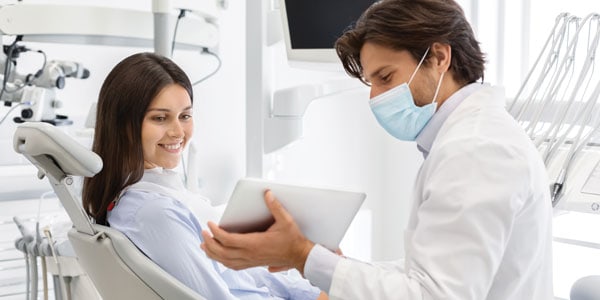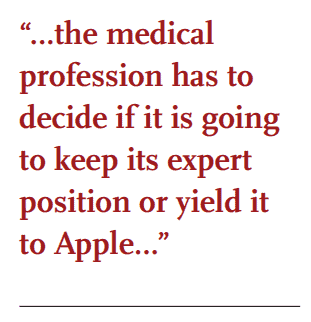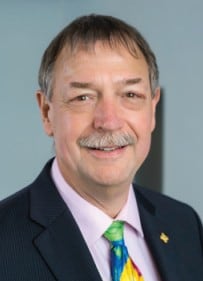Dr. Steve Carstensen offers 9 steps to defining your scope of practice and expanding your treatment goals.
by Steve Carstensen, DDS, FAGD, FACD, FICD, D.ABDSM
 Have you ever been asked to do something you weren’t trained to do? Did you feel some pressure, either from the requester or in your own mind, to say “Yes” because you “should” know what to do, but, really, it would require stepping outside your limits? This nearly universal experience in our dental offices defines “Scope of Practice.” It’s all about what you are trained to do.
Have you ever been asked to do something you weren’t trained to do? Did you feel some pressure, either from the requester or in your own mind, to say “Yes” because you “should” know what to do, but, really, it would require stepping outside your limits? This nearly universal experience in our dental offices defines “Scope of Practice.” It’s all about what you are trained to do.
The definition of what we are legally allowed to do lies within our individual state’s dental practice act. Nearly every state has included the American Dental Association’s definition of dentistry. In part, that description states:
Dentistry is defined as the evaluation, diagnosis, prevention and/or treatment (nonsurgical, surgical or related procedures) of diseases, disorders and/or conditions of the oral cavity, maxillofacial area and/or the adjacent and associated structures and their impact on the human body; provided by a dentist, within the scope of his/her education, training and experience, in accordance with the ethics of the profession and applicable law. (Adopted by the 1997 ADA House of Delegates)
As airway therapists, this definition allows us to expand our scope of practice with education and professional collaboration to treat problems in the nasal airway and oropharynx as we consider the impact of sleep related breathing disorders (SRBD) on the human body. Taking a position that dentists can do more to help their airway-compromised patients than simply providing mandibular advancement devices implies the need to understand what you are treating and the critically important fact that, as a dentist, you are not equipped to diagnose many diseases in those adjacent and associated structures. Nothing, however, prohibits the trained dentist from helping their patients become better nose-breathers, for example.
 If dentists are the chief providers of oral health care, and physicians of general medicine, where does the ethical and conscientious dentist place their practice along this continuum? How aggressively towards medicine can we move? Currently, the dividing line falls at the diagnosis of obstructive sleep apnea – dentists are not licensed to make that determination. On the other hand, dentists are expected to be effective therapists for patients referred by diagnosing physicians – and the ADA backs up the ‘effective’ bit by endorsing our use of objective monitors for measuring response States are being asked to rule on which monitors fall within the licensure of dentists – while most states have made no ruling, a few have proscribed the use of home sleep apnea testing devices.
If dentists are the chief providers of oral health care, and physicians of general medicine, where does the ethical and conscientious dentist place their practice along this continuum? How aggressively towards medicine can we move? Currently, the dividing line falls at the diagnosis of obstructive sleep apnea – dentists are not licensed to make that determination. On the other hand, dentists are expected to be effective therapists for patients referred by diagnosing physicians – and the ADA backs up the ‘effective’ bit by endorsing our use of objective monitors for measuring response States are being asked to rule on which monitors fall within the licensure of dentists – while most states have made no ruling, a few have proscribed the use of home sleep apnea testing devices.
Meanwhile, millions of Americans suffer from SRBD and there has been no significant progress in addressing this large population during the time treatment has been available. Consumer sleep technologies will soon provide every bit of data necessary to assess sleep breathing and physiologic responses; the medical profession has to decide if it is going to keep its expert position or yield it to Apple, BEDDR, Withings, or some other commercial technology entity. There is no better time for dentists to become the most important part of community health by guiding our patients into proper diagnosis and providing effective therapy to help them breathe.
What can you, as a dental team, do now to make a difference and position yourself for the near future? There are nine good steps
to take:
- Reflect on your motivations, goals, vision, and office culture and make a decision about whether treating SRBD fits.
- Optimize your team. Effective therapy only happens with a well-trained team operating efficient systems. The financial rewards can be great if you efficiently leverage your team and minimize doctor time.
- Screen every patient. This will yield surprising results if you didn’t previously include airway-related questions on your health history.
- Master the use of non-sleep-test objective monitors. High resolution oximetry devices have been used in medicine for many years and this is not license-risky for dentists. Add cardiopulmonary coupling and effects on physiology come sharply into focus.
- Know your limitations. There is no sharp dividing line between ‘Dental Health’ and ‘Health’ but physicians, nurses, and medical assistants are trained to assess data most dentists are not.
- Expand your scope through valid education. Be cautious of offerings that focus on increasing income, require a big ‘buy-in,’ or tout only one therapy choice. Scientific knowledge is rapidly accumulating. Keep learning.
- Build a coalition in your community of other professionals and create mutual trust by focusing solely on optimum patient outcomes, no matter which therapy is deployed. Airway problems are rarely solved by one provider.
- Follow your patients. Oral appliance therapy is a means of managing chronic disease. Diagnosis and treatment of SRBD is undergoing rapid change; staying abreast of new developments and your patients’ progress are parts of a professional’s commitment.
- Accept patient autonomy. Even patients who successfully manage their airway with your therapy might make another choice from time to time. Focus on what works for them; maintaining a trusting relationship will allow them to ask for your help again when they feel the need.
Readers of Dental Sleep Practice won’t be surprised by any of these steps. If the first question that comes to you is ‘How do I do that?’ congratulations, you are a seeker of knowledge – find a great education program and create your action plan. You may already be enjoying the position of ‘Sleep Expert’ in your dental community, study club, or medical building. Claim your expertise, commit to continual learning, locate and nurture your collaborative team, share information, and you will truly be making a difference in community health.
In defining your scope of practice, Dr. Carstensen notes that embracing new tools and technologies will help not only in diagnostics but also to educate patients on their treatment options. https://dentalsleeppractice.com/articles/not-sudden-but-relentless/


 Steve Carstensen, DDS, FAGD, FACD, FICD, D.ABDSM, has treated sleep apnea and snoring in Bellevue, WA since 1988. He is the Consultant to the ADA for sleep related breathing disorders, has trained at UCLA’s Mini-Residency in Sleep and is a Diplomate of the American Board of Dental Sleep Medicine. He lectures internationally, directs sleep education at Airway Technologies and the Pankey Institute and is a guest lecturer at Spear Education, University of the Pacific and Louisiana State Dental Schools, in addition to advising several other sleep-related manufacturers. For the AADSM, he was a Board Member, Secretary-Treasurer and President-Elect. From 2014–2019, he was Editor of Dental Sleep Practice magazine. In 2019, Quintessence published A Clinician’s Handbook of Dental Sleep Medicine, written with a co-author.
Steve Carstensen, DDS, FAGD, FACD, FICD, D.ABDSM, has treated sleep apnea and snoring in Bellevue, WA since 1988. He is the Consultant to the ADA for sleep related breathing disorders, has trained at UCLA’s Mini-Residency in Sleep and is a Diplomate of the American Board of Dental Sleep Medicine. He lectures internationally, directs sleep education at Airway Technologies and the Pankey Institute and is a guest lecturer at Spear Education, University of the Pacific and Louisiana State Dental Schools, in addition to advising several other sleep-related manufacturers. For the AADSM, he was a Board Member, Secretary-Treasurer and President-Elect. From 2014–2019, he was Editor of Dental Sleep Practice magazine. In 2019, Quintessence published A Clinician’s Handbook of Dental Sleep Medicine, written with a co-author.